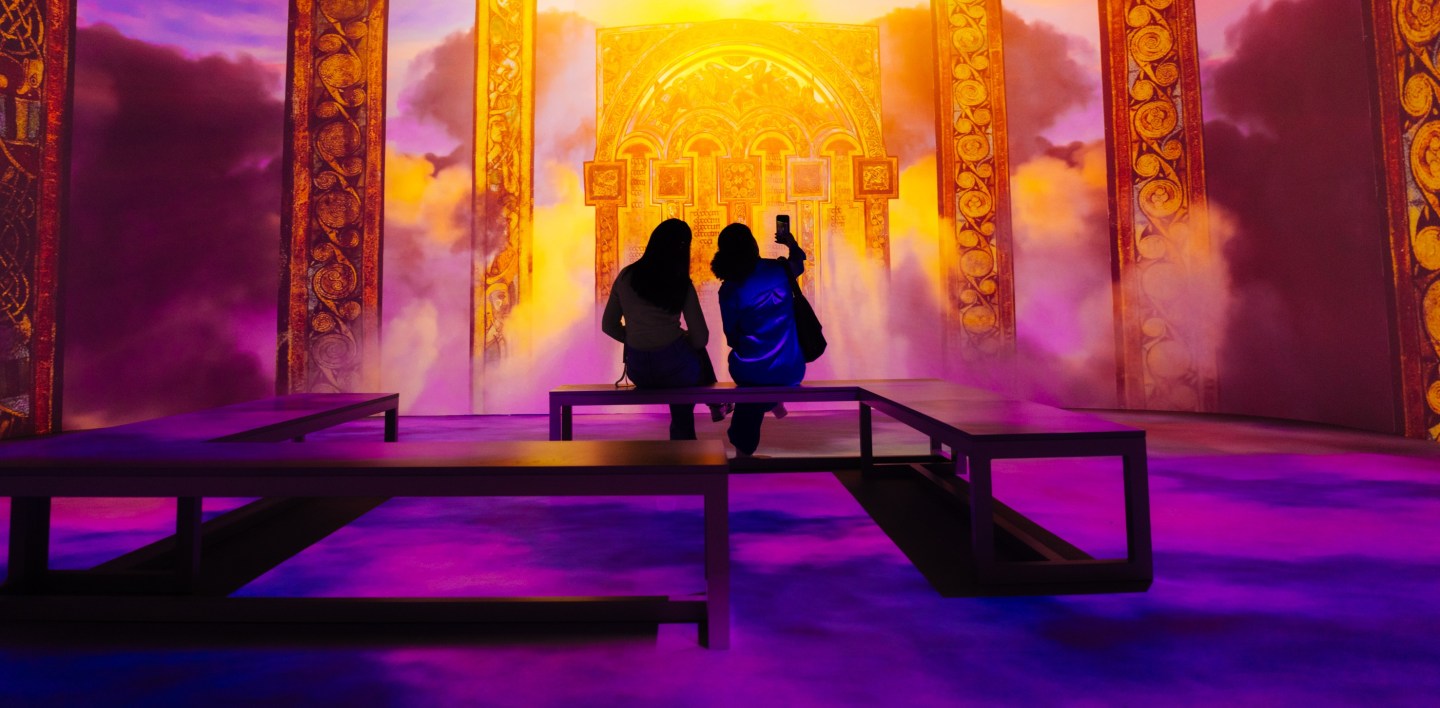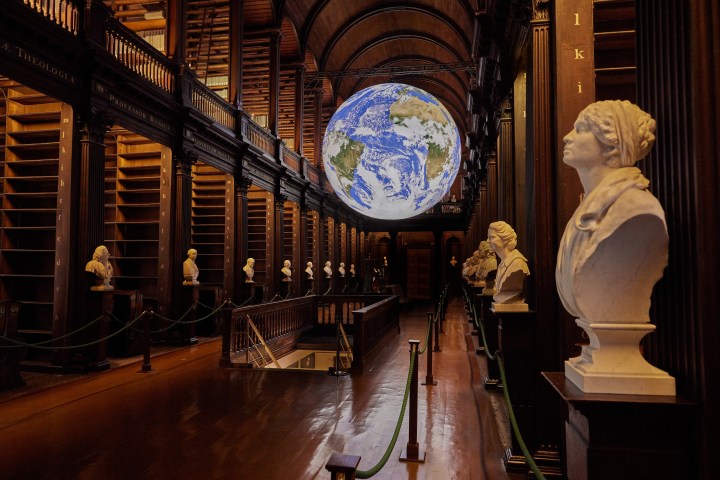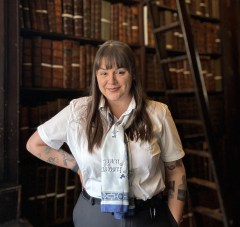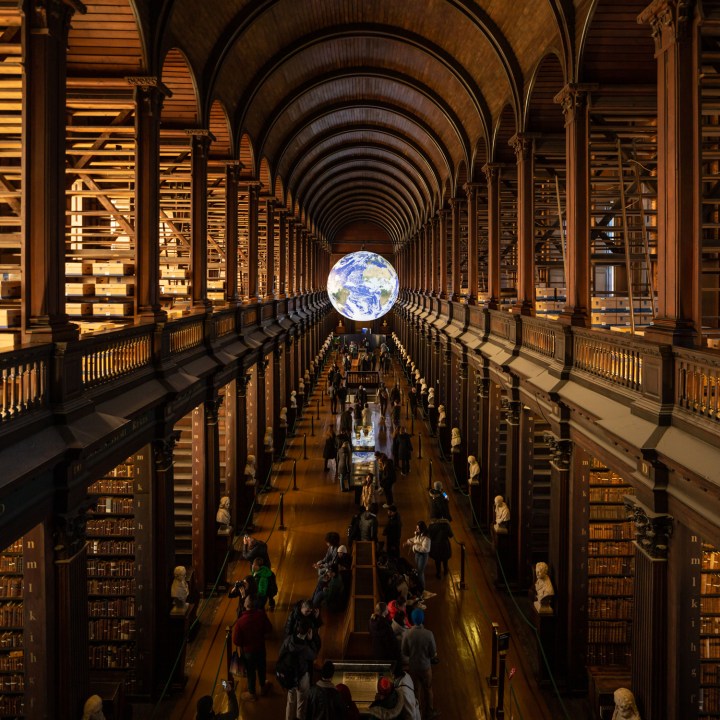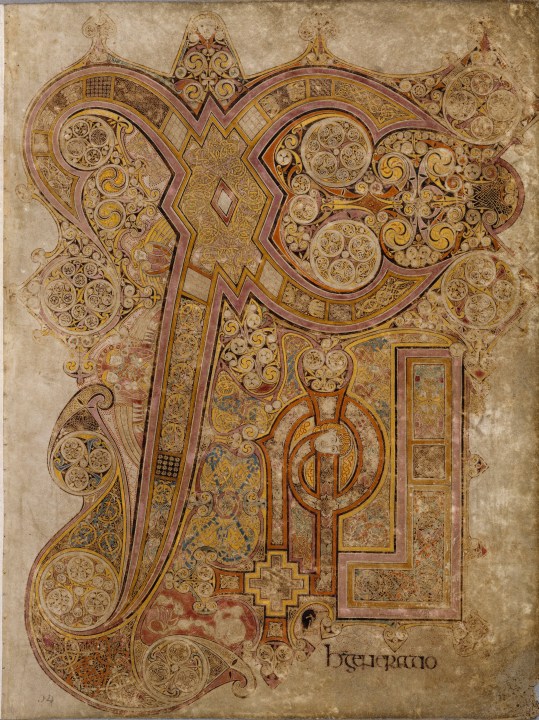
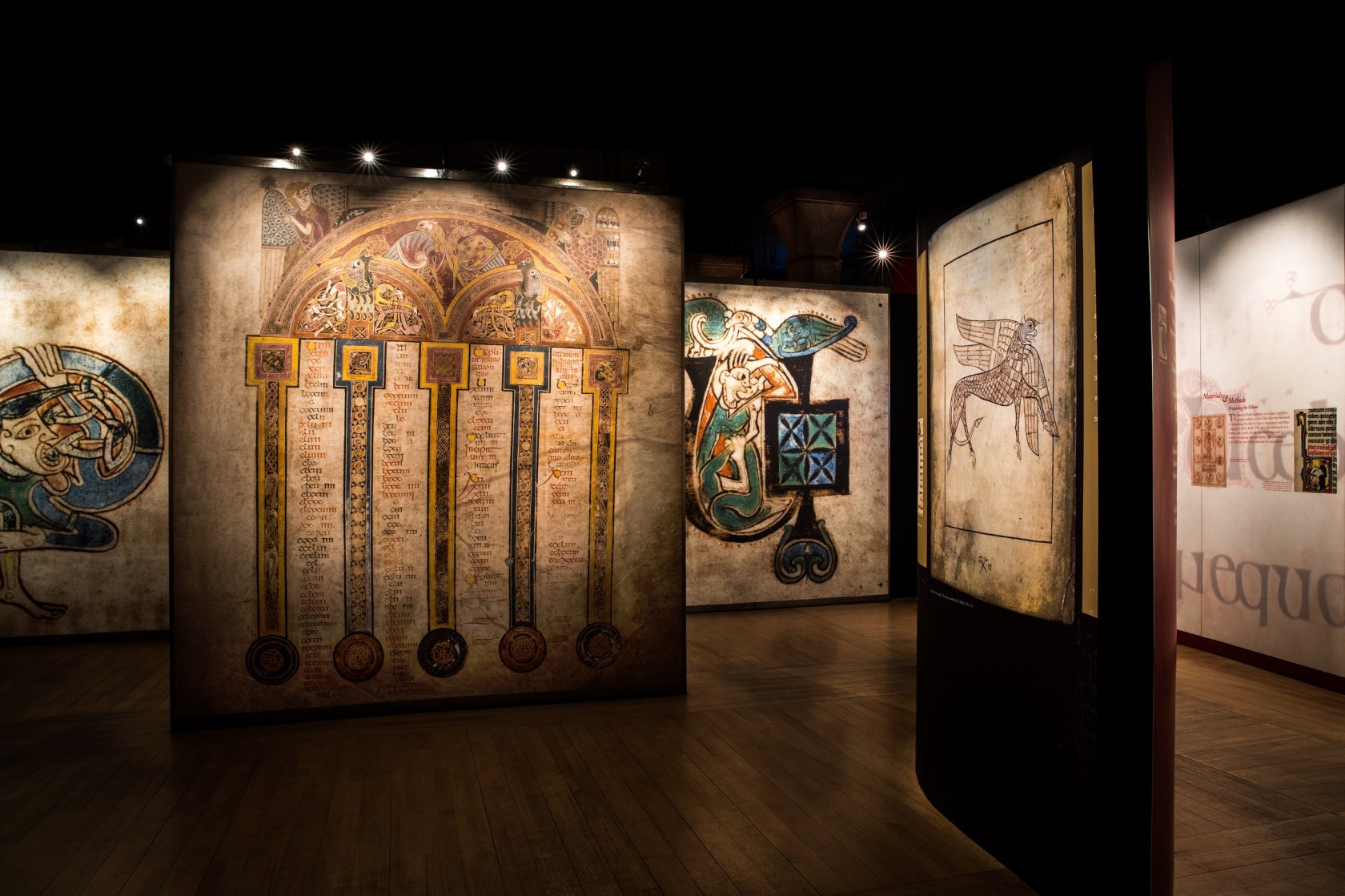
The Book of Kells is one of the most famous medieval manuscripts in the world, however people often ask “why is it so important?”.
In this blog, I’ll delve into what makes the Book of Kells truly extraordinary and address some of the top questions I’ve encountered during my time as Visitor Services Manager at the Book of Kells & Old Library.
But firstly, let’s explore some of the elements that make the Book of Kells so remarkable:
- The Book of Kells is over 1,200 years old and the colours still shine vibrantly on the page.
- The pigments in the Book of Kells were made from natural minerals, which were harvested locally by monks.
- Some of the detail in the Book of Kells is so intricate that it is almost invisible to the naked eye.
- The illustrations throughout the manuscript are filled with layers of of symbolism.
- The beauty of the lettering, portraits and Celtic knot motifs in the Book of Kells have inspired people for centuries.
- The Book of Kells survived a brutal Viking raid, where 68 monks were slaughtered.
- Every medieval monastery held manuscript copies of sacred texts, but the Book of Kells is one of only a tiny fraction that have survived.
The Book of Kells is on display at Trinity College Dublin and visitors can see two pages on display at any one time. These pages are changed every 6 to 8 weeks.
You can also access a digitised copy of the Book of Kells online.
If you would like to experience the magic of the Book of Kells in person, book your visit to the Book of Kells Experience at Trinity College Dublin and take a journey through one of the greatest surviving treasures of medieval art.
Why is the Book of Kells so famous?
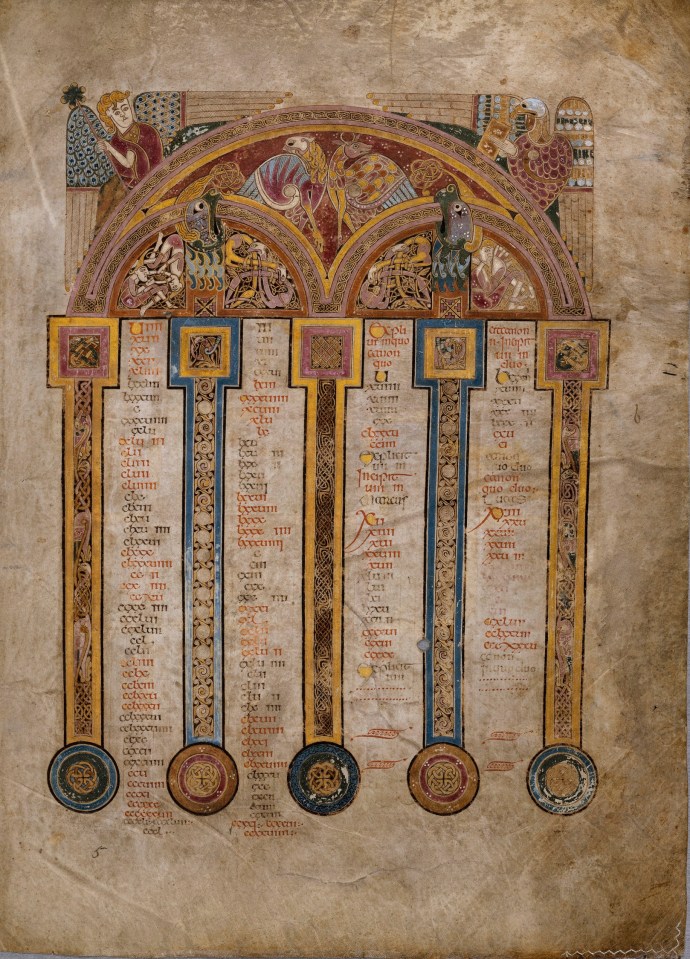
The Book of Kells is an illuminated manuscript depicting the four Gospels of the Christian New Testament, written in Latin.
Its survival for over 1,200 years is remarkable, but what truly sets it apart is the unparalleled beauty of its artwork.
While other illuminated manuscripts exist, the Book of Kells stands apart due to the sheer complexity and beauty of its ornamentation.
More elaborately adorned than any other manuscript from its era, it’s often described as the “work of angels.”
The intricate lettering, vibrant portraits, and elaborate Celtic motifs have inspired awe for centuries.
Each page reveals a wealth of detail, with some illustrations so finely crafted that they are barely visible to the naked eye.
Where was the Book of Kells made?
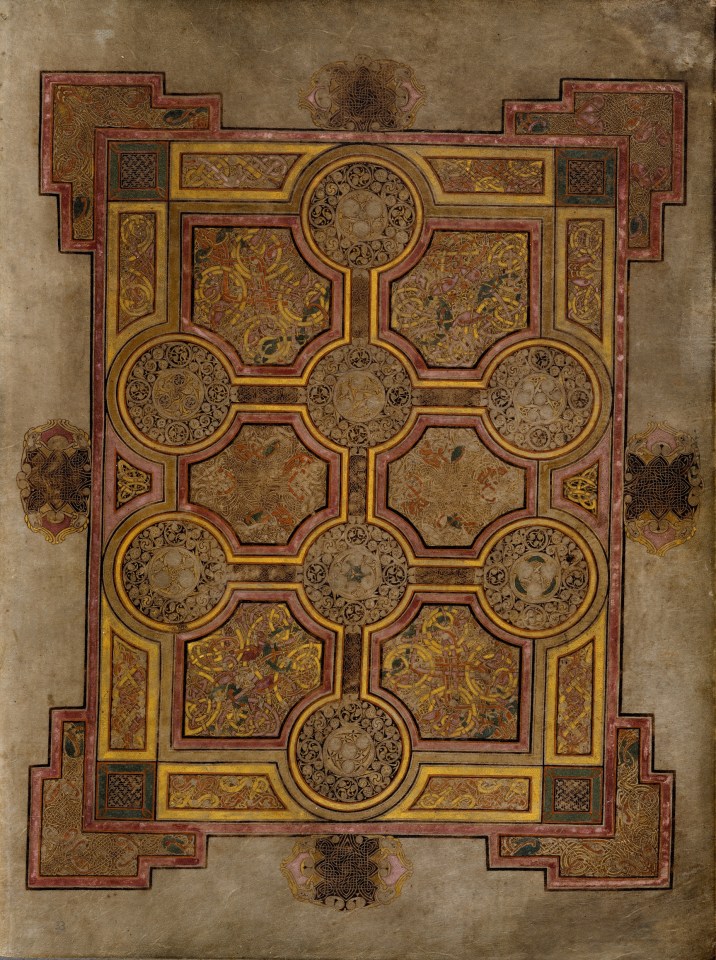
The exact origins of the Book of Kells are shrouded in mystery, but it was likely created, at least in part, by monks on the Scottish island of Iona.
The monastery founded in 561 by St Columba on the island of Iona was a centre of learning and spirituality in the early medieval period which attracted scholars and pilgrims from across Europe.
After severe Viking raids in the early 9th century that killed 68 monks, the surviving community fled to their sister monastery in Kells, County Meath, taking the manuscript with them.
The Book of Kells was likely created around the year 800, although it’s uncertain whether it was created entirely at Iona, at Kells, or partially at each location.
Due to threats to its safety, the book was presented to Trinity College Dublin in 1661 by Bishop Henry Jones for safekeeping and has remained in care of the university ever since.
Who created the Book of Kells?
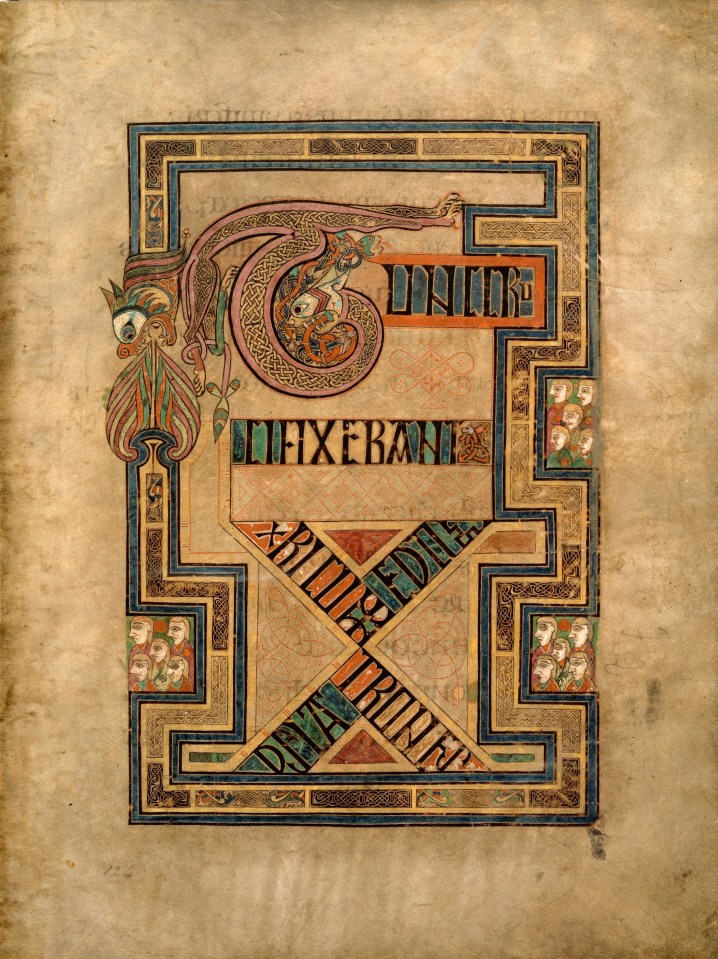
The Book of Kells was crafted by monks, possibly as young as 18. However, in medieval times, this was considered a mature age.
The meticulous detail in the manuscript is a testament to their skill and endurance.
These young scribes endured long hours of labour, and occasionally, they left notes in the margins expressing their fatigue or frustrations, such as “I’m tired of this!” or “I wish this was finished!”
The scribes also faced challenges with Latin since it was not their first language. This led to some errors such as lines being repeated and one whole page that was repeated twice with red crucifixes marking it as an error.
What is the meaning behind the Book of Kells?
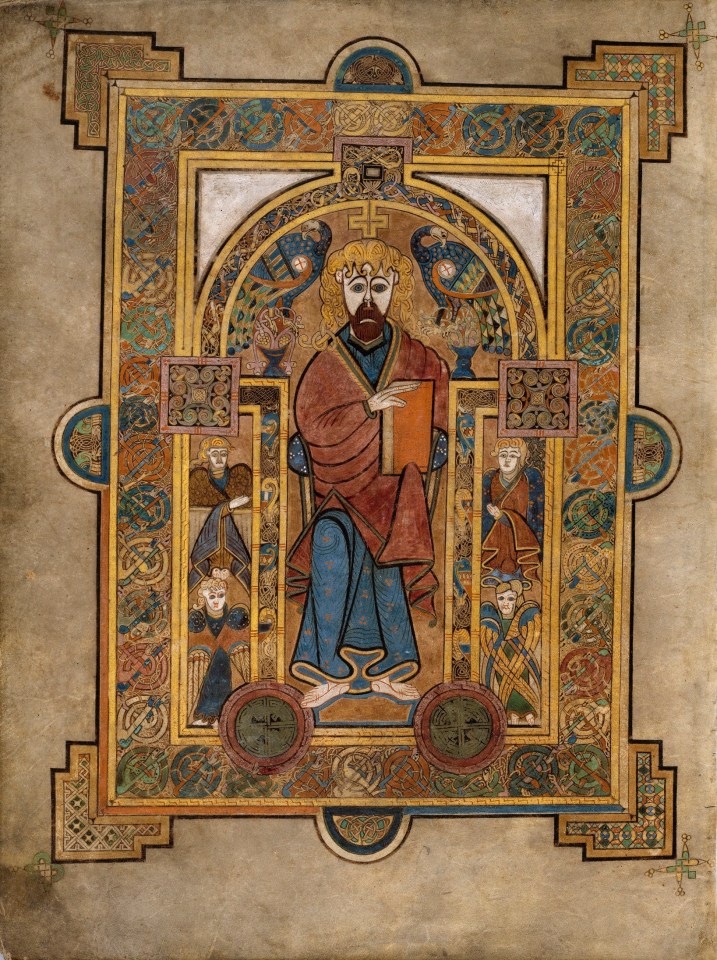
The Book of Kells is rich with symbolic meaning and filled with illustrations of animals that reference the life of Christ.
For instance, snakes, which appear throughout the decorative pages, symbolise Christ’s resurrection, akin to a snake shedding its skin and being reborn.
Peacocks, featured prominently, are believed to represent Christ’s immortality, based on the ancient belief that peacock flesh does not decay.
Lions also carry significant symbolism, reflecting the story of the lion cub that was revived by its father after three days, mirroring Christ’s resurrection.
What are the pages in the Book of Kells made of?
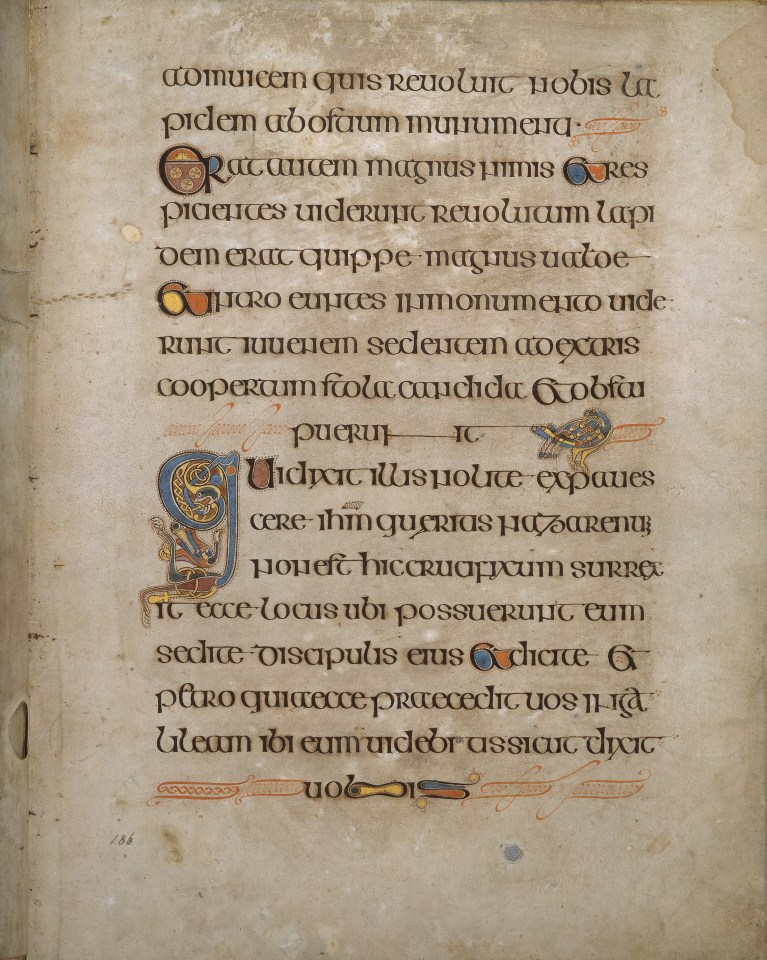
The pages of the Book of Kells are crafted from prepared calfskin (or vellum), with an estimated 185 calves’ skins used in its creation.
The book contains 340 vellum leaves (also known as folios), numbering 680 pages in total.
Vellum was a precious material in medieval times, meticulously prepared by soaking calfskin in lime, then scraping away hair and impurities.
The value of vellum meant that scribes used as much as possible of whatever skins were available, often visible through stitching and repairs in the manuscript.
How old is the Book of Kells?
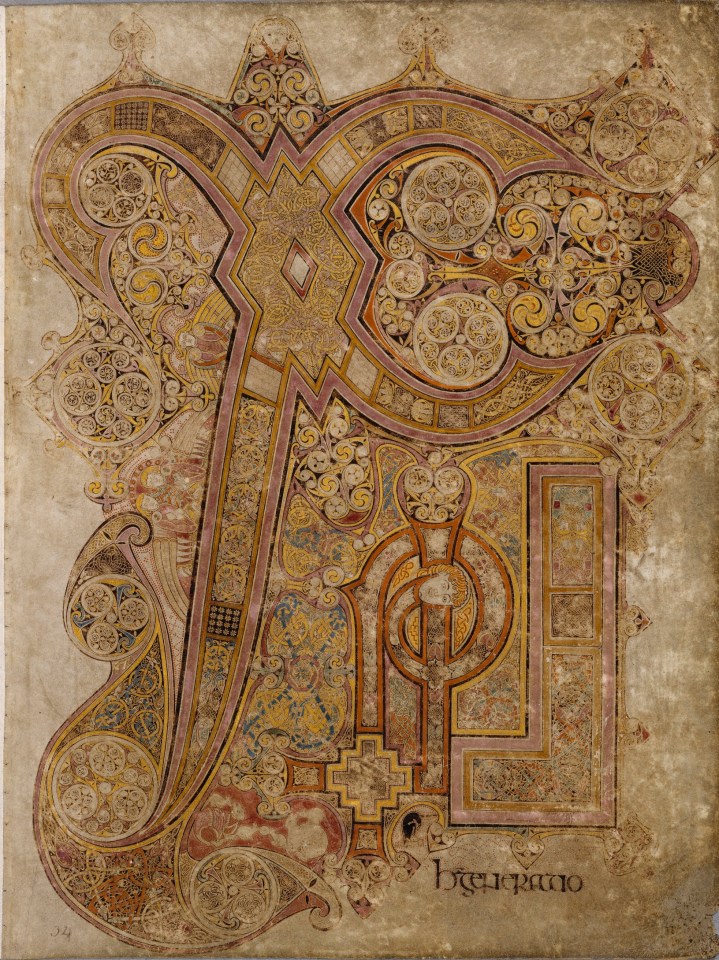
The Book of Kells is believed to have been created around the year 800 AD, therefore it is over 1,200 years old and extraordinary that it has survived this long.
The Book was not made for everyday use. It was in fact a ceremonial manuscript designed to sit on an altar.
It would have been an awe-inspiring sight at the time when it was created, since the people viewing it would have had very little exposure to visual material.
What does the Book of Kells look like?
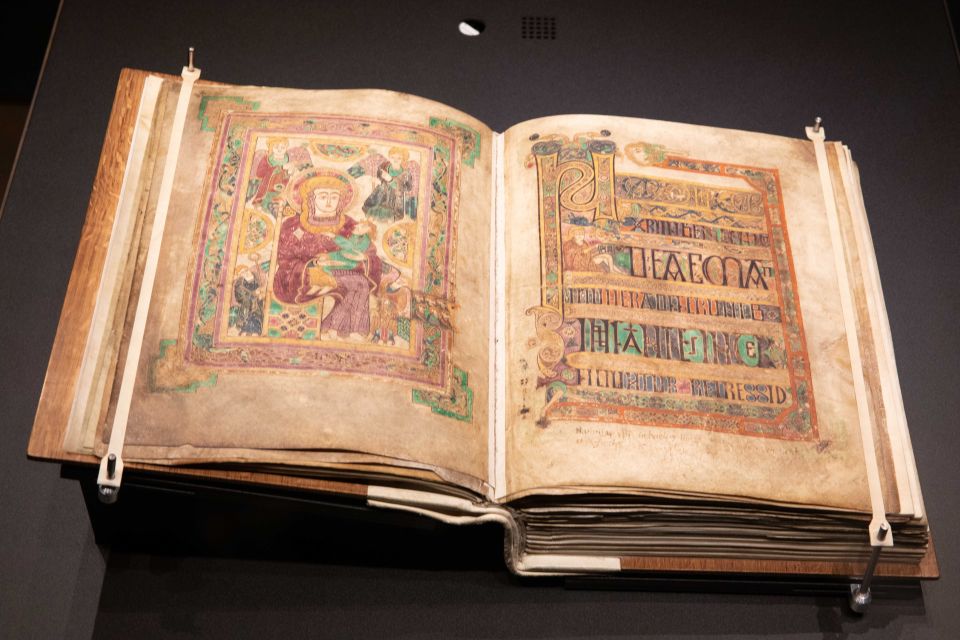
The Book of Kells pages are decorated with bright colours, elaborate knotwork, and detailed illustrations of animals and mythical creatures.
The manuscript is a wonderful example of the artistic style known as Insular art.
This style is characterised by intricate detail, patterns, zoomorphic and curvilinear motifs, a vibrant colour palette.
The manuscript measures 13 inches by 10 inches.
Originally bound in a single volume, the Book of Kells was later divided into four volumes. As a complete gospels manuscript, it contains the four Gospels of the New Testament (Matthew, Mark, Luke, and John).
For centuries, the origins of the colours used in the Book of Kells were a mystery. However, recent technological advancements have allowed the Conservation team at Trinity College to analyse the manuscript more precisely and make definitive discoveries about the source of its pigments.
Their work revealed that the blues throughout the manuscript were made from a flowering plant called woad, and not an exotic mineral called lapis lazuli, which was a widely held belief for some time.
The team also established that the pigments in the Book of Kells were likely derived from minerals and plants that were harvested locally, such as gypsum, oak apple and lichen.
Is the Book of Kells important in Irish culture?

“It is the most purely Irish thing we have… you can compare much of my work to the intricate illuminations.” James Joyce on the Book of Kells
For many people, the distinctive initials and animal based designs in the Book of Kells are shorthand for Irish national identity, inspiring art across mediums from coins and stamps to tattoos, murals and Irish dance costumes.
In fact, the Book of Kells is considered to be Ireland’s greatest cultural treasure.
Elizabeth and Lily Yeats, sisters of renowned poet W.B. Yeats, were hugely influential in the Arts & Crafts movement. Drawing inspiration from Celtic art, including the intricate designs of the Book of Kells, they created original prints and textiles.
Among their most celebrated works are the embroidered textiles designed for the Honan Chapel in Cork, which beautifully incorporate motifs from the Book of Kells, showcasing their exquisite skill and artistic vision.
In recent years, imagery from the Book of Kells has increasingly solidified its status as a symbol of Irish national identity. This is reflected in its use on the 2p coin, the £5 note, a special edition 20 euro coin in 2012, and various national postage stamps.
How to see the Book of Kells

The Book of Kells is on display in a climate controlled case at the Old Library and access for visitors is included in tickets to the Book of Kells Experience.
The Old Library is currently undergoing a landmark conservation project, which means the majority of the books have been temporarily removed from the building.
However, the Book of Kells will continue to remain on display, and visitors can now enjoy a breathtaking new art installation called Gaia, along with cherished treasures like the Proclamation, the Brian Boru harp, and the Long Room’s iconic sculptures.
Additionally, a new immersive digital journey through the artwork in the Book of Kells has been introduced to the visitor experience. This is housed in a purpose-built building next to the Old Library and is included in Book of Kells Experience tickets.
The Book of Kells is more than just a book; it is a symbol of Irish cultural identity, a window into medieval times and a masterpiece of medieval art. It is extraordinary that the manuscript has survived over 1,200 years with its intricate artwork remaining vivid to this day. Learn more about the history of the Book of Kells here.
Book your visit to the Book of Kells Experience for an unforgettable journey through history and art at Trinity College Dublin.






